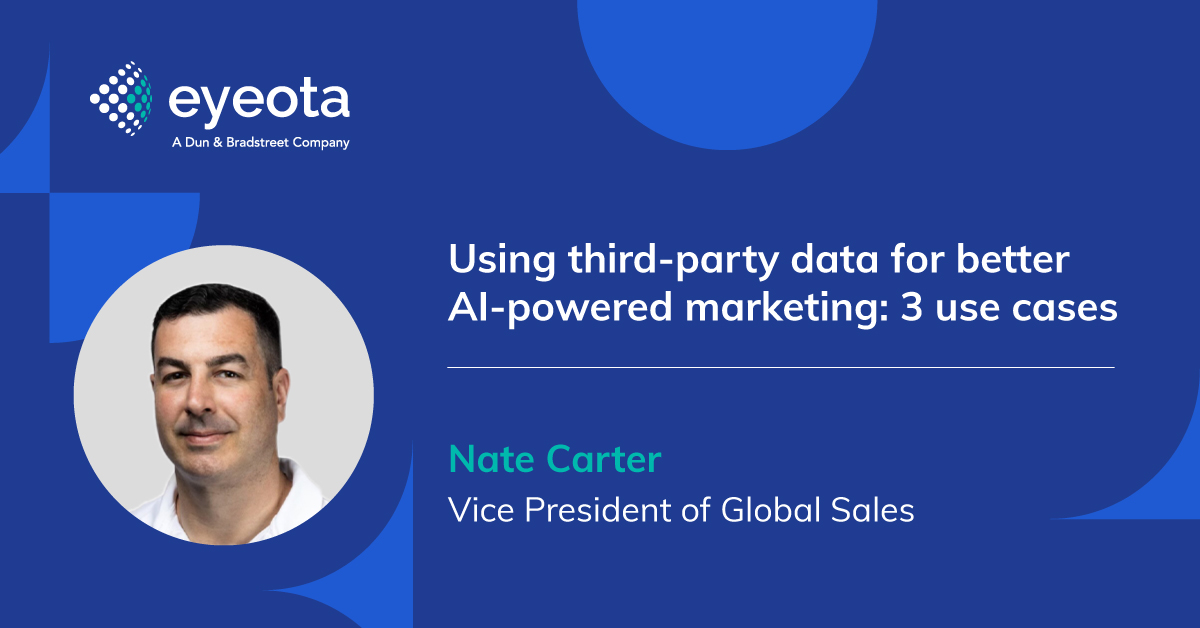
Personalization is one of the most widely touted promises of AI for marketers, yet achieving it at scale is often more complicated than it appears. Brands can only tailor content as far as their understanding of each customer allows. And for many, that understanding is incomplete. AI models require broad, accurate data to fuel relevant, dynamic personalization across every channel and customer touchpoint.
Scenario: A national department store chain is building a machine learning model to personalize website content, email offers and push notifications across its e-commerce and mobile app ecosystem.
What the brand has: The company has rich transactional data and loyalty card histories. It knows what customers have bought, when and (to some extent) where. But that’s largely where the insight ends, leaving blind spots when attempting to predict what customers might want next.
The gap third-party data fills: To create more nuanced personalization models, the brand enriches its customer profiles with lifestyle, behavioral and psychographic signals from third-party data. This includes interests, intent signals and life-stage indicators that first-party data alone doesn’t capture. As a result, the retailer can segment users based not just on past purchases, but on likely future needs. This enables smarter content decisions across channels, even for anonymous site visitors or newly acquired users. The result is personalization that goes beyond product recommendations to delivering experiences that increase both conversion rates and customer loyalty.
AI is also transforming how marketers allocate budgets across increasingly complex media mixes. Knowing which channels deserve investment — and when — is essential for brands trying to maximize the impact of every marketing dollar. Yet many organizations struggle to optimize across channels when their data remains siloed or too backward-looking to guide proactive decisions.
Scenario: A global electronics manufacturer wants to use AI to allocate media budgets dynamically across programmatic, social, CTV and in-store digital placements. The goal is to maximize impact without overspending on any single channel.
What the brand has: The brand collects channel-level performance data and some store-level sales metrics, but most insights are retrospective, limited to performance reports and last-click attribution models.
The gap third-party data fills: By layering in intent signals and cross-device behavioral patterns from third-party data providers, the brand can train its AI models to better predict where and how consumers will engage next. For example, third-party intent data may reveal rising interest in a new product category, helping advertisers identify emerging trends and shifting preferences. With these insights, the AI can proactively shift spend across channels and formats in near real time, anticipating demand instead of simply reacting to it. This enables the brand to align its omnichannel investments with customer behavior as it evolves.
Recommendation engines are among the most visible applications of AI in marketing, but their effectiveness hinges on the depth and accuracy of customer insights. AI-powered recommendations can delight customers with relevant offers, but only if the models understand the customer’s true context and intent.
Scenario: A leading airline is training a recommendation engine to suggest flight upgrades, lounge access and destination packages tailored to individual passengers.
What the brand has: Flight history, frequent flyer status and in-app browsing behavior offer a partial view into customer preferences. These signals help the airline infer basic patterns but do not capture the broader context that shapes travel decisions.
The gap third-party data fills: Third-party data can reveal whether a customer is planning a honeymoon, a business trip or a relocation. It can identify seasonal travel trends, competing brand preferences or household demographic factors that impact purchasing behavior. For instance, third-party intent data might show a customer researching family-friendly attractions at their destination, signaling an opportunity to offer a bundled package. By enriching its AI models with these insights, the airline can surface offers the customer might not have found on their own. This helps the airline turn its recommendations into revenue while creating a smoother, more personalized customer journey.
Even the best AI model is only as good as the data it learns from. That’s why brands seeking to use AI effectively need breadth, accuracy and transparency in their data. Eyeota, a Dun & Bradstreet company, offers the kind of high-quality, privacy-compliant third-party data that enhances customer intelligence, strengthens personalization and turns AI from a buzzword into a business advantage.
Previously featured on Campaign
We see that you have the Global Privacy Control enabled in your browser. We have turned off all but "Required" cookies which are necessary to enable the basic features of this site to function. If you wish to further exercise any applicable data subject rights (DSR) please complete the form available at Your Privacy Choices. For further information on how Dun & Bradstreet uses your personal information, please see our Cookie Policy.